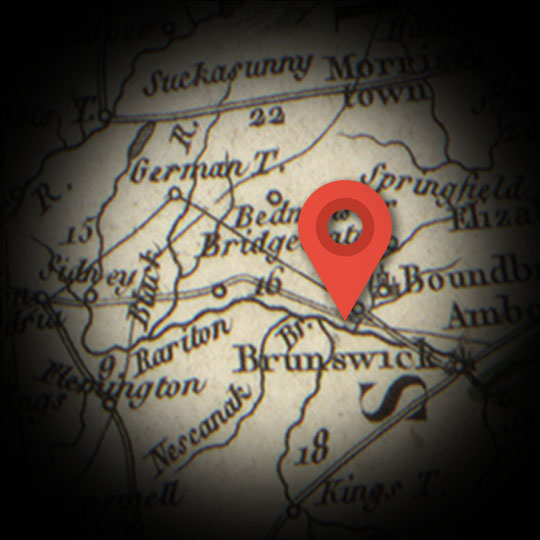NEW BRUNSWICK
Explore
[New Brunswick, NJ]
Since Alexander Hamilton and much of the Continental Army spent so much of the Revolutionary War years in New Jersey, it’s no surprise that New Brunswick became part of the itinerary.
This settlement was centrally located between New York and Philadelphia. It was situated along the King’s Highway, a navigable wagon road ordered by King Charles II about 1650 to link the North American colonies from Boston, Massachusetts, to Charleston, South Carolina.
During the Long Retreat from New York in 1776, forces under George Washington scrambled to maintain cohesion after a series of stinging defeats and defensive maneuvers at the likes of Harlem Heights and White Plains. By the end of November, 1776, the strategic retreat brought Hamilton to New Brunswick, home of Rutgers University.
Hamilton displayed some notable heroism there at New Brunswick. On December 1st, he and his cannon crew successfully held off the advancing British and their Hessian auxiliary allies long enough to let the rest of the American army cross the Raritan River by a small, wooden bridge they later burned.
Hamilton came back through New Brunswick in July, 1778, amid the strategic, interpersonal, and political fallout of the Battle of Monmouth.
It was here at the White Hall Tavern that courts martial proceedings were held for Major General Charles Lee, whom Washington accused of failing to follow orders at the Battle of Monmouth. According to Washington, Lee’s incompetence nearly caused a disaster to the Continental Army.
Presiding over the trial was Brigadier General “Lord Stirling” Alexander—whom Hamilton had known for some time.
The Lee courts-martial was also an incident in which Hamilton crossed paths with an important later political rival: future 5th president and member of the “Virginia Junta,” James Monroe, then a young, fellow soldier. Monroe in the 1790s was to play a central role in the notorious Maria Reynolds scandal. He would very nearly fight a duel with Hamilton himself.
Hamilton also visited New Brunswick “to meet some “Gentlemen from New York on business” in August, 1791, while he was living in Philadelphia and working as Secretary of the Treasury in the first Washington administration.

TIME FRAME:
Nov 1776-July 1791
